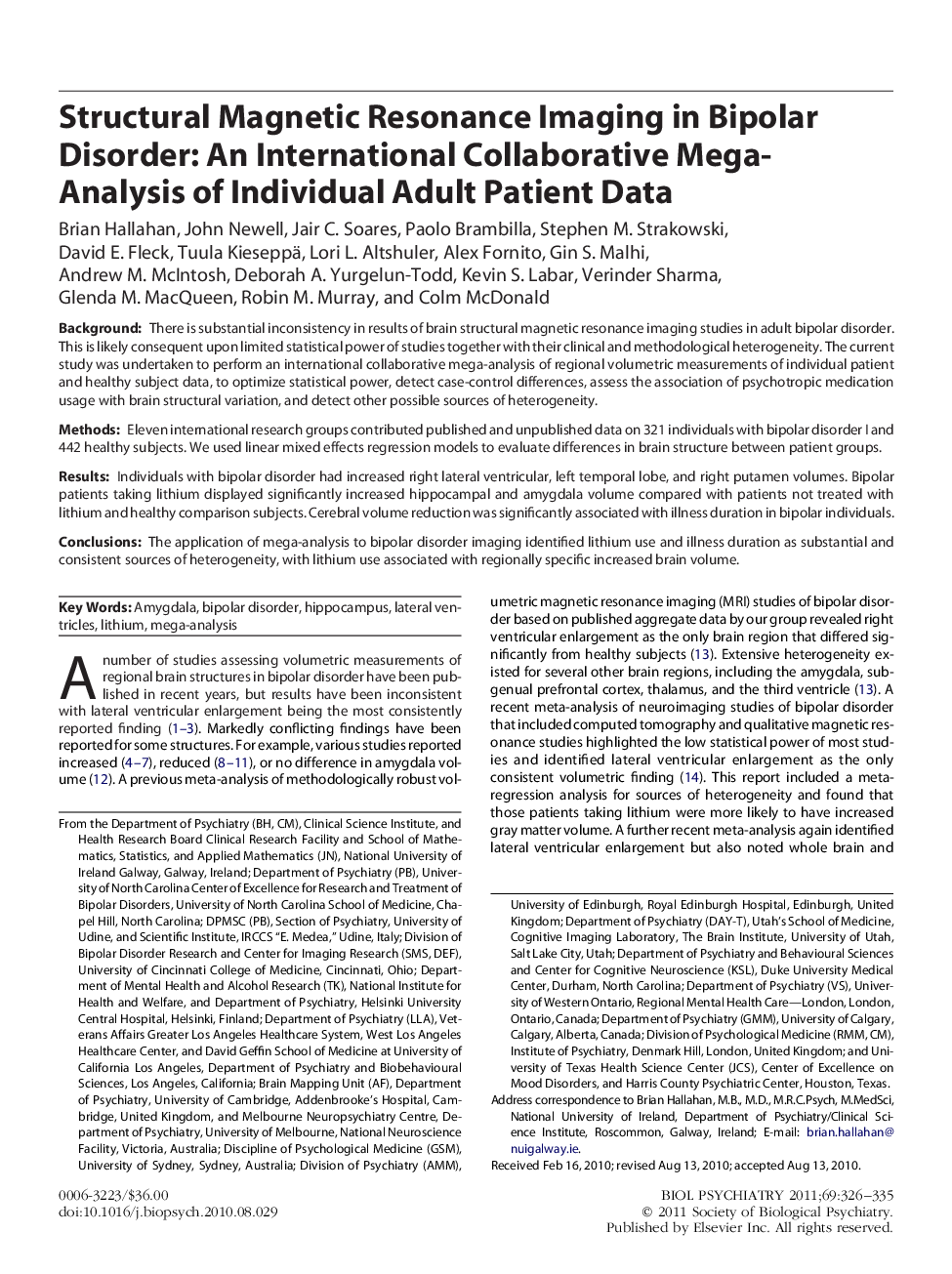| Article ID | Journal | Published Year | Pages | File Type |
|---|---|---|---|---|
| 4179523 | Biological Psychiatry | 2011 | 10 Pages |
BackgroundThere is substantial inconsistency in results of brain structural magnetic resonance imaging studies in adult bipolar disorder. This is likely consequent upon limited statistical power of studies together with their clinical and methodological heterogeneity. The current study was undertaken to perform an international collaborative mega-analysis of regional volumetric measurements of individual patient and healthy subject data, to optimize statistical power, detect case-control differences, assess the association of psychotropic medication usage with brain structural variation, and detect other possible sources of heterogeneity.MethodsEleven international research groups contributed published and unpublished data on 321 individuals with bipolar disorder I and 442 healthy subjects. We used linear mixed effects regression models to evaluate differences in brain structure between patient groups.ResultsIndividuals with bipolar disorder had increased right lateral ventricular, left temporal lobe, and right putamen volumes. Bipolar patients taking lithium displayed significantly increased hippocampal and amygdala volume compared with patients not treated with lithium and healthy comparison subjects. Cerebral volume reduction was significantly associated with illness duration in bipolar individuals.ConclusionsThe application of mega-analysis to bipolar disorder imaging identified lithium use and illness duration as substantial and consistent sources of heterogeneity, with lithium use associated with regionally specific increased brain volume.
